- Categories:
Sweat dripping from your brow, you take off your backpack and sit down on a rock beside a cool stream. You splash your face and take a long drink of water from your bottle. Your clothes are sodden with sweat and sticking to your back.
Sound familiar? Hiking in warm, humid conditions is just one of the things that most Queenslanders accept as a ‘given’. But you do need to take it seriously—heat and humidity can make a simple day hike seem unbearable, if you aren’t experienced in managing heat and you don’t have the right gear or nourishment to help you cope.
Here are 8 tips on how to handle the heat when hiking in Queensland National Parks.
1. Understand the weather
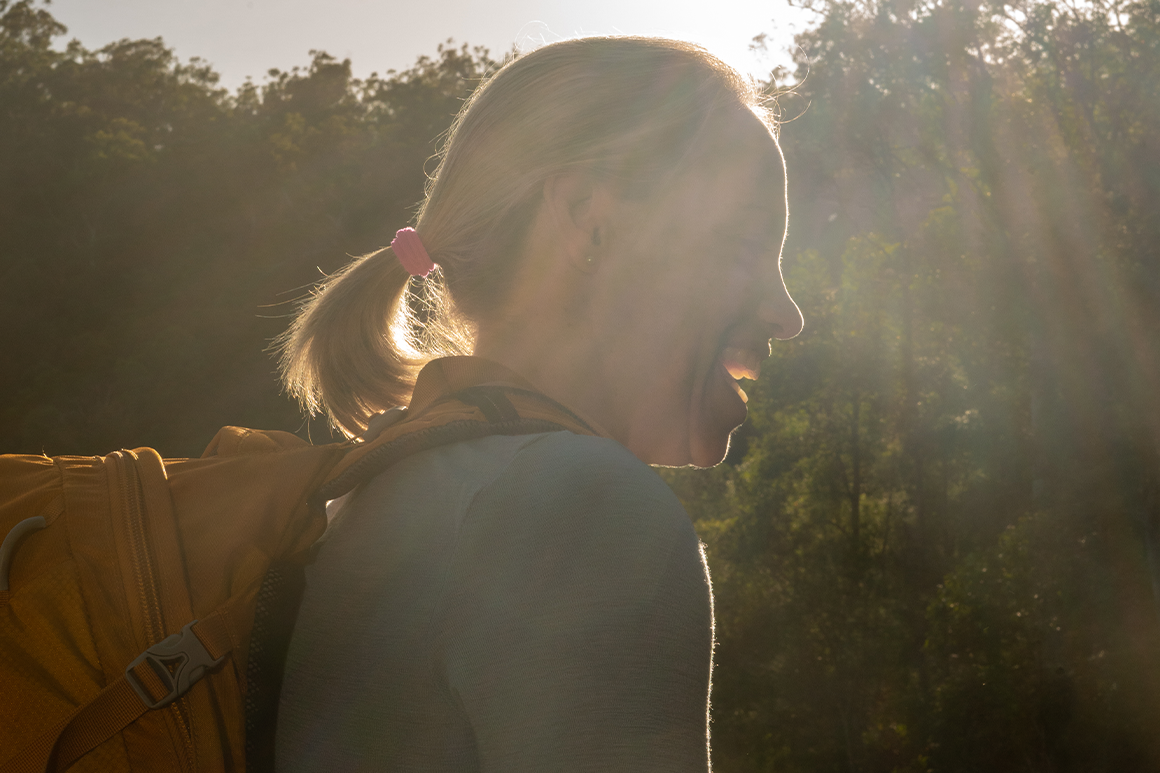
Heat and humidity affect hikers | Greg Cartwright © Queensland Government
Heat, humidity and wind combine to create very different conditions for hiking. Don’t be fooled by the seasons—in Queensland, even in winter, you can still experience high temperatures and high levels of humidity. Check the local conditions and plan accordingly. Hot and humid conditions can leave you feeling very tired and ‘washed out’ if you aren’t experienced in managing your hydration and cooling off regularly.
Also be aware of bush fire season or any fire management taking place. Always check Park alerts before you go.
2. Look for shade
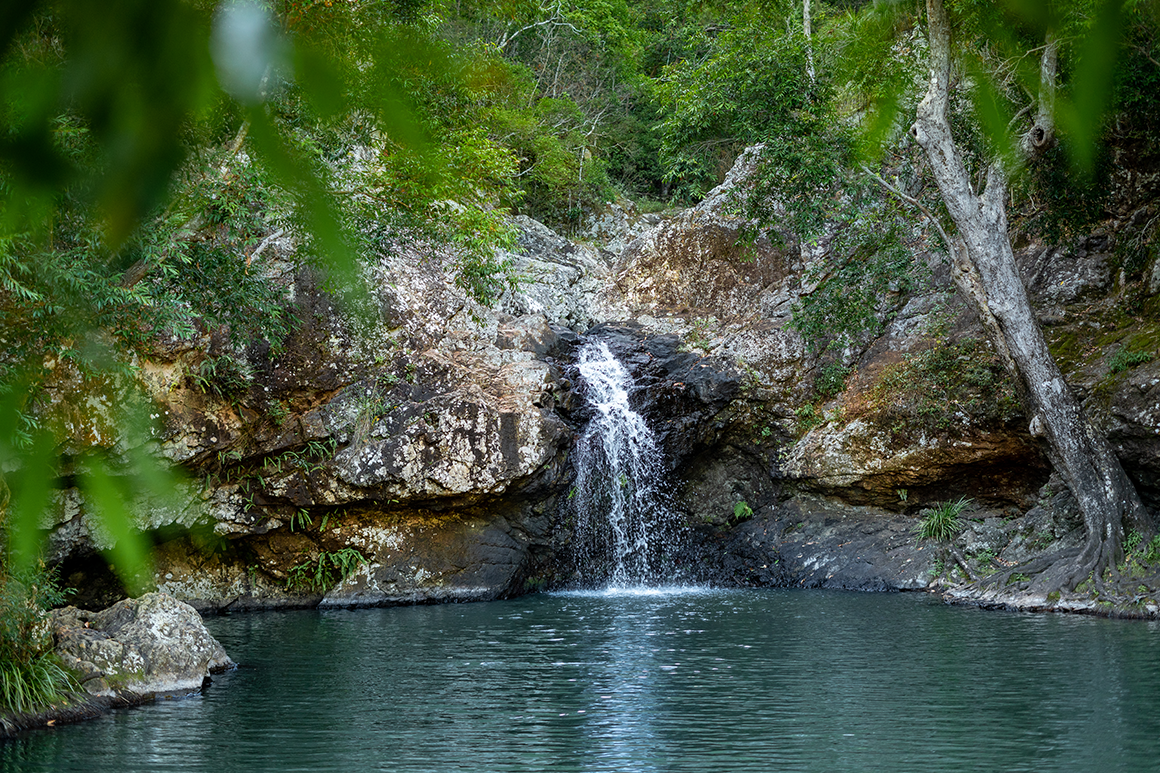
Kondalilla Falls National Park | Greg Cartwright © Queensland Government
Choose a hiking route that is mostly shaded. Avoid walking on exposed trails where radiant heat from surfaces can increase your heat exposure. Coastal locations tend to receive more breezes, but can also be hot if you are walking in exposed areas or on sand for long periods.
Choose routes with waterfalls, rivers or streams along the way. Splash your face and wet your hat and bandana to cool down. Our heads carry a lot of heat, especially when under a hat, so if you’re overheating, move into shade, take off your hat and throw some water over your head!
3. Go early
Beat the heat and start early at sunrise. This is the best time of day for energy levels; plus you get the benefit of watching the sunrise and enjoying the sounds of nature waking in the bush. Go for shorter hikes—4 hours or less—to avoid the midday heat. Check the direction the sun rises from and work out a route that will be shaded for the longest time during the morning.
4. Consider your fitness
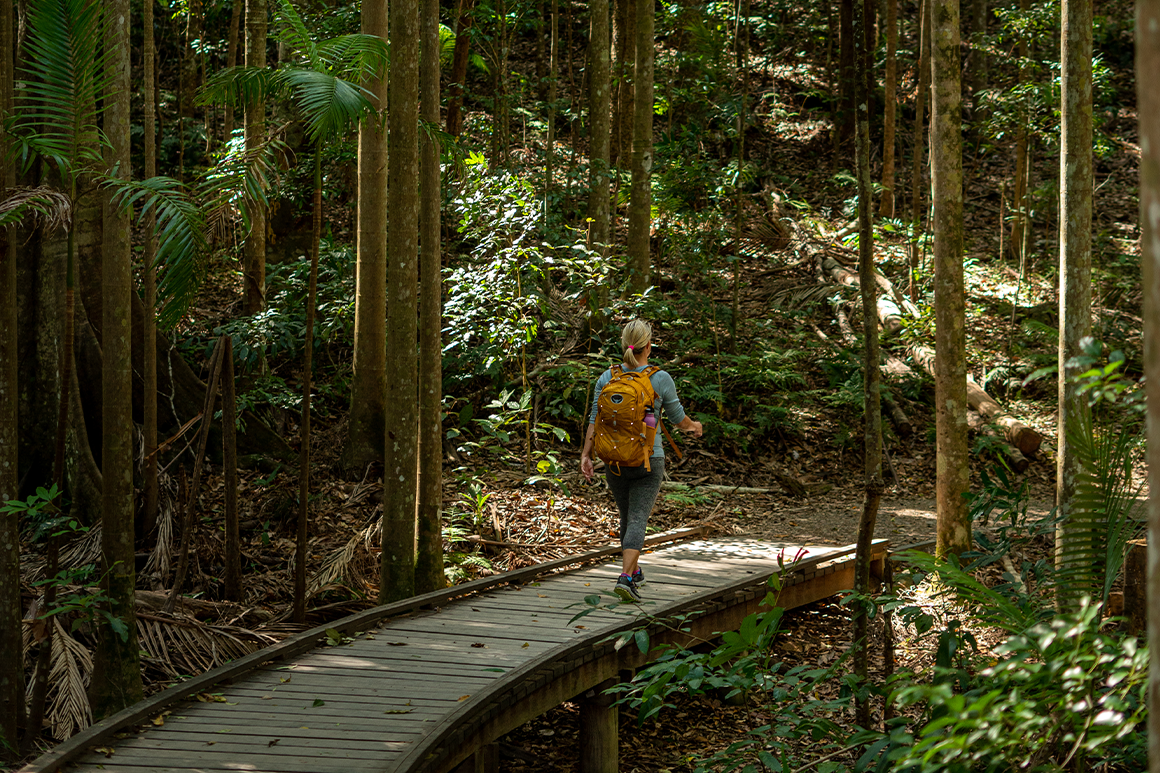
Choose a walk to suit your fitness | Greg Cartwright © Queensland Government
If you are new to walking and still building your fitness, the heat can affect you more. Listen to your body and stop or slow down if you feel unwell. If you’ve flown in from a cooler climate, give yourself a couple of days to acclimatise to the heat and humidity before setting out on a hike. Adjust the duration and intensity of your walks to suit your physical fitness and level of acclimatisation.
5. Hydrate frequently
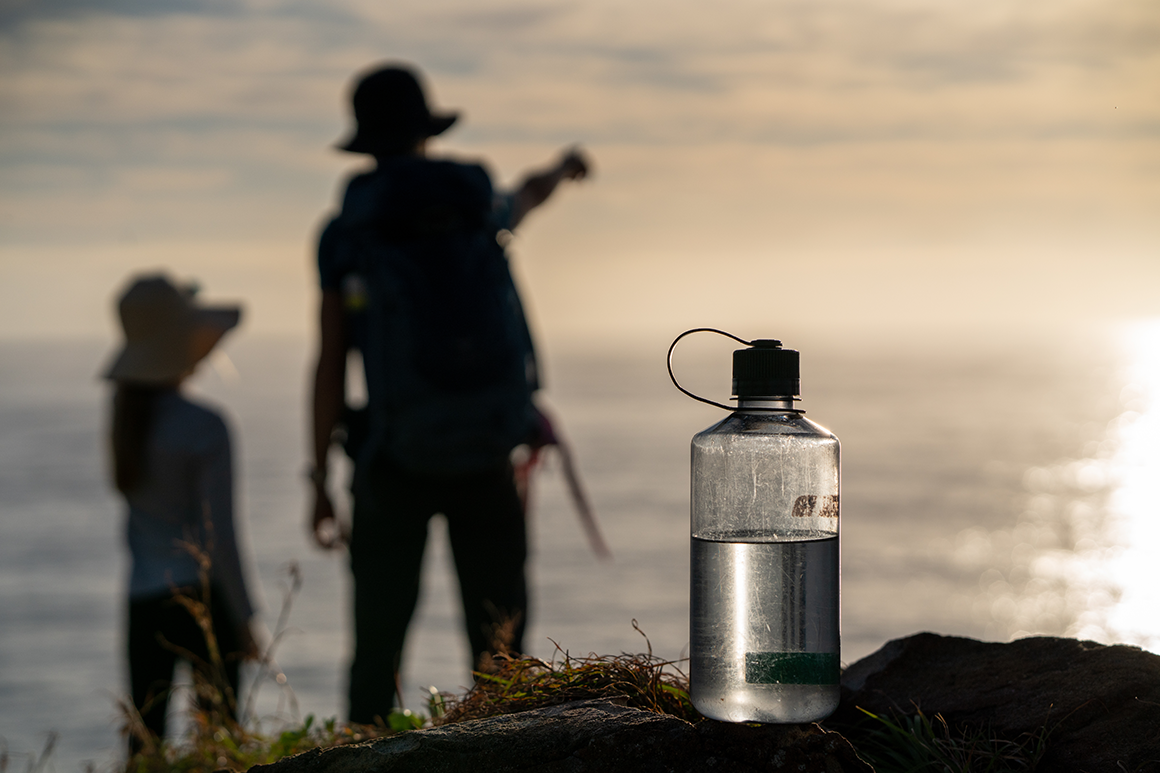
Always carry water | Greg Cartwright © Queensland Government
Carry lots of water—fill your water bladder and bottles with very cold water and ice.
Alternate drinking plain water with electrolytes. Mix the electrolytes according to the instructions—don’t over-dilute them.
Take a selection of thirst-quenching foods (both salty and sweet) such as juicy fruits. Frozen fruits (grapes, oranges) are a real treat on the track. Often when you’re feeling hot, you lose your appetite, so choose small bites of light food over heavy, rich foods.
6. Lose the cottontails!
We tend to overlook what we wear under our hiking gear—underwear is out of sight, out of mind! But the wrong style of underwear can cause uncomfortable chaffing, especially in the heat.
Choose underwear made from fabrics other than cotton, which absorbs moisture when you sweat, and can rub and chafe. Choose undies that don’t have large, rough seams as these can also cause discomfort. For women, try on your sports bra with your backpack over the top—bra straps can be uncomfortable on a hot hike if they rub or catch just below the backpack straps.
7. Wear light, loose clothing
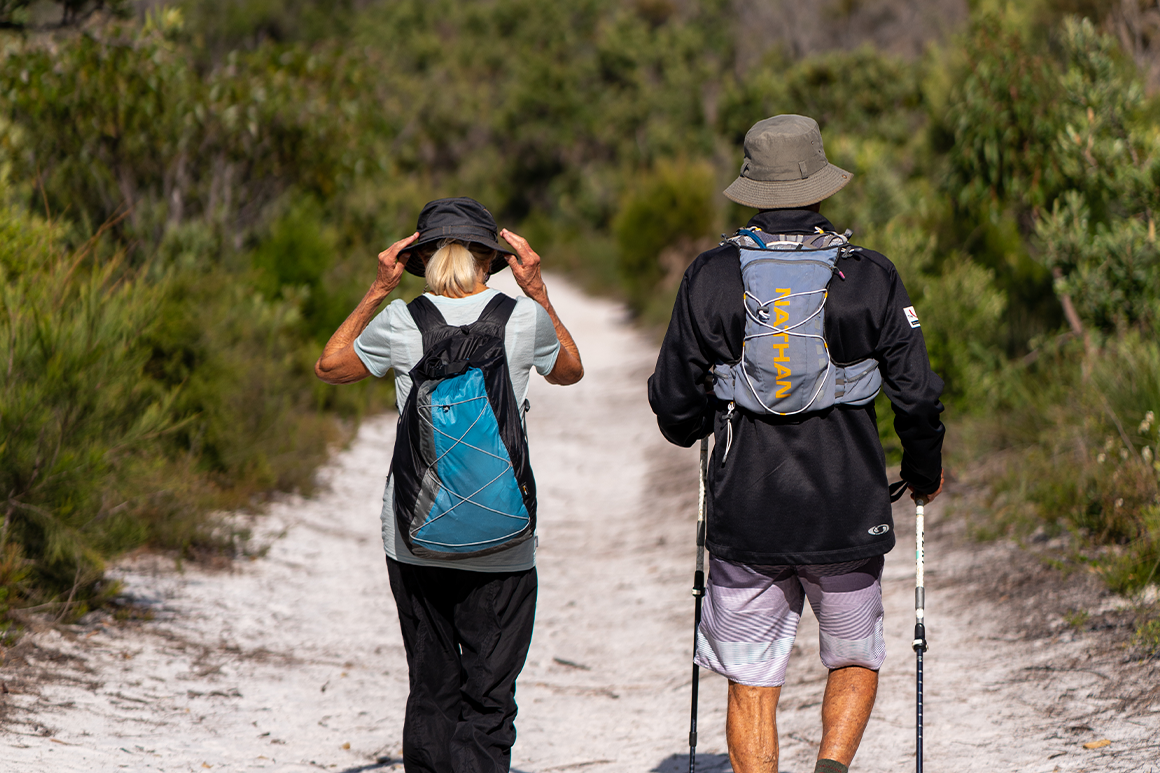
Cool clothing | Greg Cartwright © Queensland Government
Choose your outerwear just as carefully. Wear hiking clothes that are cool, loose-fitting, lightweight and light-coloured. Choose shorts and shirts made from dryfit/wicking material; but avoid cotton, which absorbs moisture and can feel hot and heavy.
Wear a lightweight long-sleeve sun-shirt to protect your arms from the sun. Wear shorts that give you room to move and breathe—avoid tight-fitting shorts with stiff waistbands as these will cut in to your midline when you sweat, and rub beneath your backpack waist strap. Choose lightweight hiking socks that come above the ankles.
8. Don’t be afraid to accessorise!
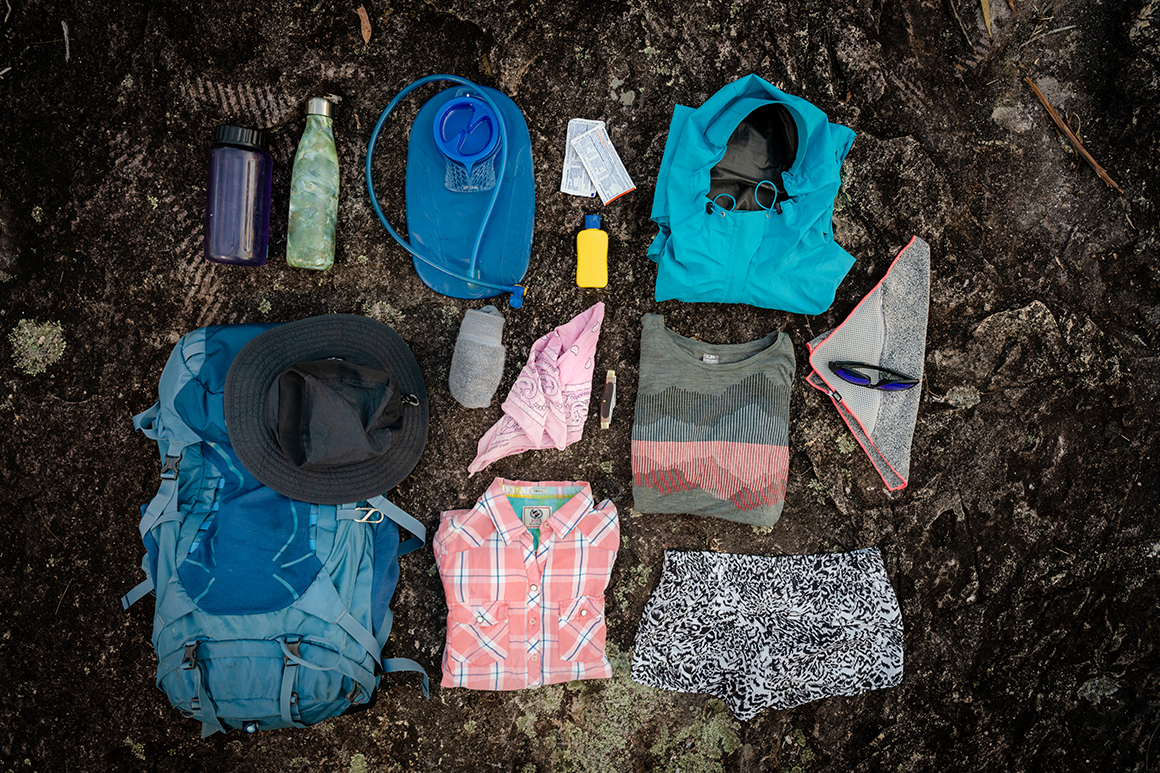
Remember your accessories | Greg Cartwright © Queensland Government
The small stuff is every bit as important to your comfort as the rest.
- Carry sunscreen and lip balm with sun protection in your pack—apply both regularly.
- Wear a bandana/buff—wet it regularly and drape it around the back of your neck to help with cooling and keep the sun off your neck.
- Always, always wear a hat—a wide-brimmed hat provides the best sun and heat protection.
- Remember your sunglasses—forget the glamour look, your hiking sunnies should curve around your face and keep out light and dust from the sides.
- Keep a small quick dry towel in your pack—use it to sponge down your face, hands and body regularly.
Ready to go?
To start your planning, check out the website for ideas on half-day hikes close to home that you can reach for an early start.
- Search parks near me to find a park and choose a walk suitable for you and your walking buddies.
- Check Park alerts before you head off, and also check weather conditions for weather and wind forecasts, and recent rainfall. Happy hiking!


